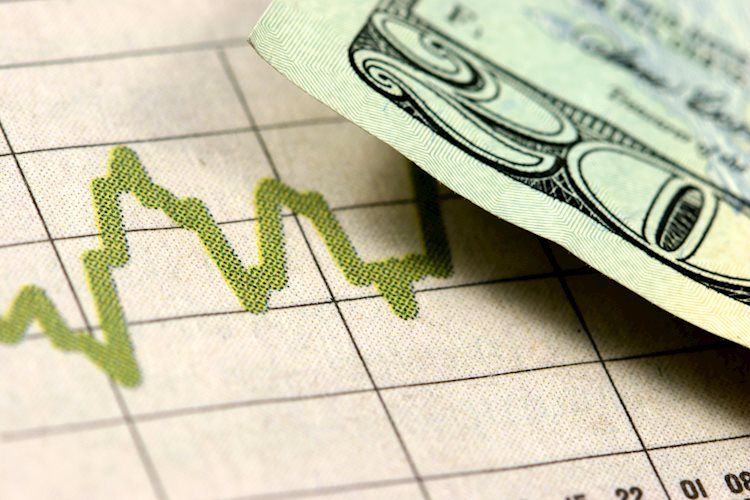- The US Dollar is trading soft against its rivals and seems to be consolidating the last session’s gains.
- The Core PCE from September matched expectations at 3.7% YoY.
- The US bond yields are mixed, while dovish bets on the Fed remain high.
- Focus now shifts to next week’s Fed decision.
The US Dollar (USD) measured by the US Dollar Index (DXY) declined to 106.35, near the 20-day Simple Moving Average (SMA), and then recovered towards 106.60. Datawise, Personal Consumption Expenditures (PCE) figures from September showed no surprises, and investors seem to be taking profits after three consecutive days of gains.
The United States economy is holding strong, as seen in the last set of economic activity figures, which included a preliminary estimate of the Q3 Gross Domestic Product (GDP) rising at an annualised rate of more than 4%. Investors now set their sights on next week’s Federal Reserve (Fed) decision on the first day of November to gather further clues on the bank’s next steps.
Daily Digest Market Movers: US Dollar declines as PCE decelerated in September, yields mixed
- The US DXY index fell to a daily low towards 106.35 after gaining nearly 1% in the last three sessions. During the American session, the index jumped back towards 106.60 clearing part of the daily losses.
- The US Bureau of Economic Analysis reported that September’s headline PCE Price Index matched the expected value. It came in at 3.4% YoY vs the expected 3.4% and showed no changes regarding its last figure of 3.4%. The Core figure came in at 3.7% YoY, vs. the consensus of 3.7% and decelerated from its previous figure of 3.8%, which was revised lower.
- Other data showed that the Michigan Consumer Index came in higher than expected at 63.8 vs the 68 expected but failed to trigger a significant reaction from the Greenback.
- In the meantime, US Treasury yields are mixed. The 2-year rate stands at 5.03%, and the 5 and 10-year yields are at 4.76% and 4.83%, respectively.
- For next week’s Fed’s decision, markets have practically priced in a pause, but the monetary policy statement and Chair Powell’s words will be closely watched to position for the next meeting in December.
- According to the CME FedWatch Tool, the odds of a hike in the year’s last meeting declined to nearly 20%.
Technical Analysis: US Dollar Index bulls must defend the 20-day SMA to keep rising
Based on the daily chart, the technical outlook for DXY Index remains neutral to bullish as the bulls gathered significant momentum in the last sessions. To keep it, they must defend the 20-day Simple Moving Average (SMA) at 106.35.
Meanwhile, the Relative Strength Index (RSI) has a negative slope above its midline, while the Moving Average Convergence Divergence (MACD) indicator prints stagnant red bars. Furthermore, the pair is above the 20,100 and200-day SMAs, indicating a favourable position for the bulls in the bigger picture.
Supports: 106.35 (20-day SMA), 106.00, 105.70.
Resistances: 107.00, 107.30, 107.50.
Central banks FAQs
Central Banks have a key mandate which is making sure that there is price stability in a country or region. Economies are constantly facing inflation or deflation when prices for certain goods and services are fluctuating. Constant rising prices for the same goods means inflation, constant lowered prices for the same goods means deflation. It is the task of the central bank to keep the demand in line by tweaking its policy rate. For the biggest central banks like the US Federal Reserve (Fed), the European Central Bank (ECB) or the Bank of England (BoE), the mandate is to keep inflation close to 2%.
A central bank has one important tool at its disposal to get inflation higher or lower, and that is by tweaking its benchmark policy rate, commonly known as interest rate. On pre-communicated moments, the central bank will issue a statement with its policy rate and provide additional reasoning on why it is either remaining or changing (cutting or hiking) it. Local banks will adjust their savings and lending rates accordingly, which in turn will make it either harder or easier for people to earn on their savings or for companies to take out loans and make investments in their businesses. When the central bank hikes interest rates substantially, this is called monetary tightening. When it is cutting its benchmark rate, it is called monetary easing.
A central bank is often politically independent. Members of the central bank policy board are passing through a series of panels and hearings before being appointed to a policy board seat. Each member in that board often has a certain conviction on how the central bank should control inflation and the subsequent monetary policy. Members that want a very loose monetary policy, with low rates and cheap lending, to boost the economy substantially while being content to see inflation slightly above 2%, are called ‘doves’. Members that rather want to see higher rates to reward savings and want to keep a lit on inflation at all time are called ‘hawks’ and will not rest until inflation is at or just below 2%.
Normally, there is a chairman or president who leads each meeting, needs to create a consensus between the hawks or doves and has his or her final say when it would come down to a vote split to avoid a 50-50 tie on whether the current policy should be adjusted. The chairman will deliver speeches which often can be followed live, where the current monetary stance and outlook is being communicated. A central bank will try to push forward its monetary policy without triggering violent swings in rates, equities, or its currency. All members of the central bank will channel their stance toward the markets in advance of a policy meeting event. A few days before a policy meeting takes place until the new policy has been communicated, members are forbidden to talk publicly. This is called the blackout period.
